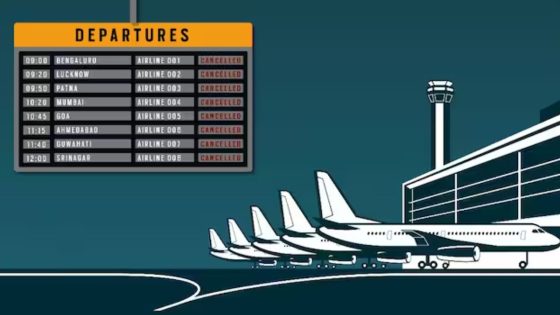Picture this: You’ve reached the end of a holiday trip and it’s time to fly back home. But when you reach the airport, your flight is delayed. You wait and wait and then your flight is cancelled. Information is patchy. The airline should help, but it seems overwhelmed – nobody seems to know what’s going on. Alternative flights are getting booked up quickly, and so are hotels. You end up stuck.
This scenario is becoming more common in major airports across the country. Who is to be blamed? In a nutshell: weather.
While flight disruptions are widely associated with fog in winter, data analysed by India Today’s Open-Source Intelligence (OSINT) team shows incidents of flight cancellations and delays climb up as temperatures rise.
Weather-related cancellations disrupted 39.6 percent of flights in May alone compared to 16.2 percent in April, according to the flight operation data sourced from the Directorate General of Civil Aviation (DGCA).
At least 1.5 lakh passengers have been affected by flight delays in May alone – 36 percent higher than over the previous month, as per the data.
“Higher surface temperatures are affecting flight operations, causing catastrophic turbulence, as we have witnessed in recent times. Moreover, altered jet streams and prevailing winds due to global warming impact existing flight routes,” Air India pilot Captain Rajneesh Sharma told India Today.
During summer months (May-June), cancellations spike to around 35-40 percent, largely due to the impact of higher temperatures on aircraft performance. About 80-85 percent of flights cancellations are due to weather-related reasons in winter months (November to January), primarily due to fog.
According to the cumulative monthly passenger delay analysis, months with extreme temperatures between 2022 and 2024 had a higher percentage of passenger delays compared to other months.
In 2022, post-pandemic staff shortages across the industry led to chaotic scenes at some airports and meant some airlines’ planned schedules couldn’t be delivered. However, data from the past three years indicate that weather-related reasons were the major factor for flight cancellations. In winter, fog significantly impacts air travel by reducing visibility and causing delays.
Experts say higher temperatures require longer takeoff rolls and increased fuel consumption.
Data on reactionary delays — those caused by the late arrival of aircraft, crew, passengers, or loads from a previous journey — reveals a subtle yet noticeable uptick during the summer months over the past three years.
“This is primarily driven by thermal challenges – extreme summer temperatures can significantly impact the aerodynamic and propulsive performance of aircraft,” explained flight performance engineer Akshansh Yadav.
More time is required for the wind speed to settle down, which adds to the reactionary delays, he said.
Extreme summer temperature reduces air density which necessitates longer takeoff distances and reduced payload capacity, particularly at airports in hotter regions. It leads to increased runway occupancy and congestion at airports. Thin air entering engines can decrease thrust, requiring pilots to use higher power – in turn increasing fuel consumption and frequent engine maintenance.
During the January-May 2024 period, domestic airlines carried a total of 661. 42 lakh passengers, as against 636. 07 lakh during the year-ago period, according to the latest official data. January-May 2024 saw an increase of about 3.3 percent in passengers who were affected by flight delays, compared to the same period last year.
Captain Sharma said high temperatures lead to more unstable atmospheric conditions, increasing the likelihood of clear-air turbulence – an atmospheric phenomenon that typically occurs at high altitudes where clear skies and more serene conditions prevail. This can make air travel more bumpier in days to come. Airlines constantly need to adjust flight routes resulting from altered jet streams to optimise fuel efficiency – which is a major operational hassle.
Frequent weather-related disruptions lead to increased compensation claims from passengers while also increasing the insurance premiums for airlines and airport facilities, thus making air travel more expensive, he cautioned.
Source Agencies




